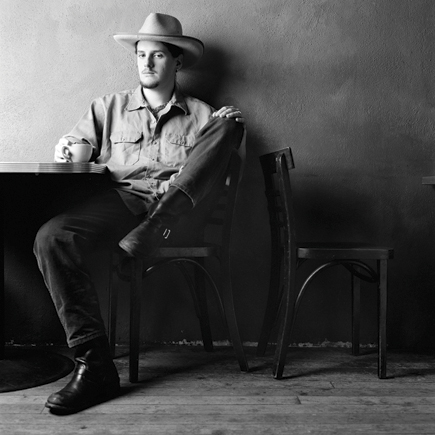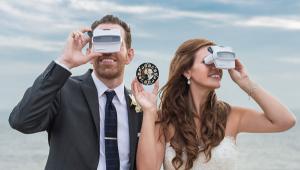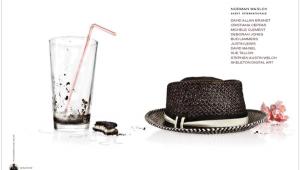Model Releases: Fact & Fiction, And Some Case Studies Page 2
Ellen Boughn (www.ellenboughn.com) describes her personal experience in stock photo sales with these four examples:
1) “Always get the model release before the shoot. For example, I did a shoot in New York City with five models using both exterior and interior locations but the photographer waited until the end of the day to get model releases. One male model would not sign! Since he was in the middle of most of the pictures, we had to toss almost all the images.
2) “Never cheat on model release signatures. A stock photographer returned from shooting in Hong Kong and when I asked for model releases he said he did not have any so we could not use the photos and turned him away. Later he came back with signed releases—in Chinese! Since the release was in English and the Chinese was clearly taken off the characters from a restaurant menu, we sent him away again and never worked together again.
3) “Anyone can sue anyone at anytime for anything. A magazine asked us for a ‘sky and desert’ photo from stock and it ran as a small insert in a vertical double truck with a larger image of multiple (nude) skydivers taken from the ground. The large image was supplied by another stock company. One of the competitors in the naked skydiving contest sued. The individual was not identifiable in any way, was shown in an editorial context, and in no way did my attorney feel that the usage demanded a model release. Even so, the individual filed suit against all six stock companies supplying images for the article. It took $1600 in legal fees to get out of the situation even though we did not do anything wrong and the woman didn’t even appear in the photo that we supplied!
4) “Good thing we got a release. We supplied an image of a man wearing a handmade western belt buckle to a client that was used in an advertisement. When we got a call from an individual after publication asking to be paid I was a little confused as I knew we had a model release. When I called the photographer, we determined that not only did we have a model release but the belt buckle was being worn by the photographer’s father and the photographer had made the buckle. Some greedy soul thought they looked like the guy in the ad and thought they recognized the belt buckle but they were wrong and we were home free.”
Therese at andyBATTstudio (www.andybatt.com) describes another situation working with a model: “I got a call from a greeting card company. They loved a photo by Andy and wanted to license it. I remember the shoot well as Andy was hired to get stills when the video crew wasn’t working with the talent. Because we did not handle the production, I was positive we didn’t get a model release. Andy confirmed, saying the talent refused to sign the release because she has her own greeting card company and uses her face on her cards. Now there’s a model who knows her worth! The client was a bit disappointed, but they’re sending me their catalog to see if we’d like to submit any of our other work for consideration. So something good came out of it.”
David H. Wells (www.davidhwells.com) talks about how to get model releases on location: “I used to hire assistants a lot when I was doing corporate work, particularly annual reports. Since I was usually hired to do the projects in what was called the ‘National Geographic’ style, I did not need an assistant to help me with lights or to carry heavy gear. No, I needed an assistant to solve the two problems that regularly came up when I was doing location work for advertisers and corporations. I needed an assistant to keep people out of my way, whether it was the subjects I was photographing or the people I was working for. I also needed someone to get the subjects I was photographing to sign model releases. The best assistants in those cases were usually women who knew enough about photography to keep people from ruining my shots and
had the ability to talk subjects into signing model releases. The cold, hard reality is that women will cooperate and sign releases for women. Men will do the same for women but usually not for other men.”
Robert Tolchin (www.roberttolchin.com) describes getting a model release after the photo shoot: “A few years ago I took the Paul Elledge/Leasha Overturf portrait workshop at Santa Fe Workshops. One of the assignments was to photograph strangers in a café. I approached a potential subject who allowed me to photograph him. I did the shoot, and got his address so I could send him a print. I was shooting film and although I had a good feeling about the shot, I really didn’t know what I had until I saw the proofs. In all modesty, it was a great fine art portrait. It has won awards and is still one of my favorite shots, but I hadn’t gotten a release. Fortunately, I had gotten the subject’s name and address to send him a print. When I sent his print, I enclosed a release, a self-addressed envelope, and two $20 bills. I explained that I had no specific commercial use for the photo planned, but I was excited about the shot and wanted to be able to publish, license, or sell it if the situation presented itself. The $40 was a gamble. I might have received no release or he might have signed it for a dollar. My feeling was that it was worth the risk and that it was quite an incentive to sign. I got my release.”
 |
|
|
Resources
All things related to model releases can be found at the following websites:
http://asmp.org/tutorials/property-and-model-releases.html
http://asmp.org/tutorials/using-property-releases.html, and www.asmp.org/releases.
There is an app for that: Easy Release is found at the following iTunes link:
http://itunes.apple.com/us/app/easy-release/id360835268?mt=8.
Another release program which includes more types of releases such as Appearance, Property, Location, and Crew is mRelease at:
http://itunes.apple.com/us/app/mrelease/id359000573?mt=8.
- Log in or register to post comments
















































